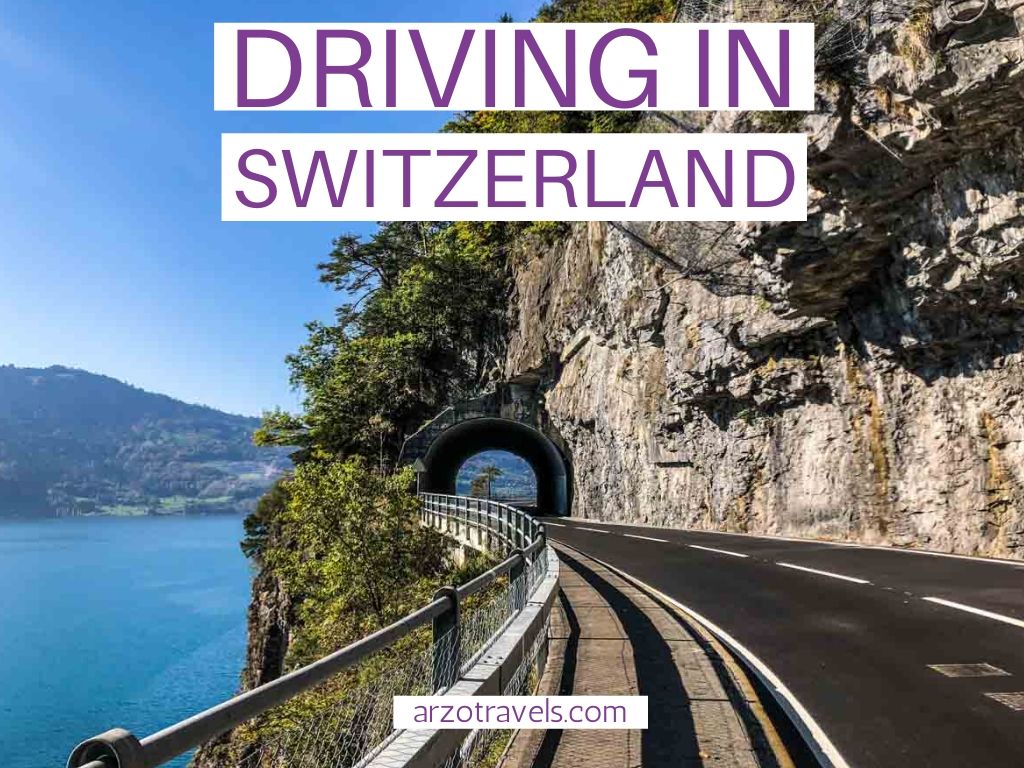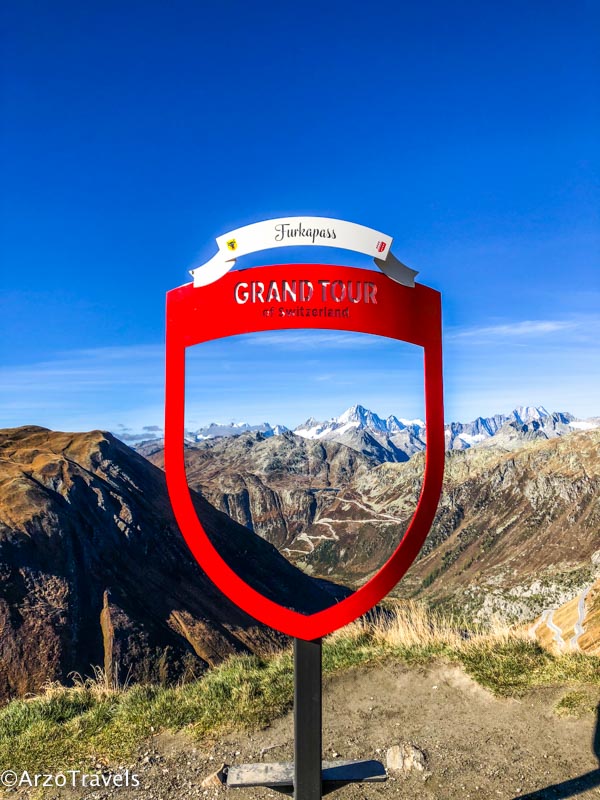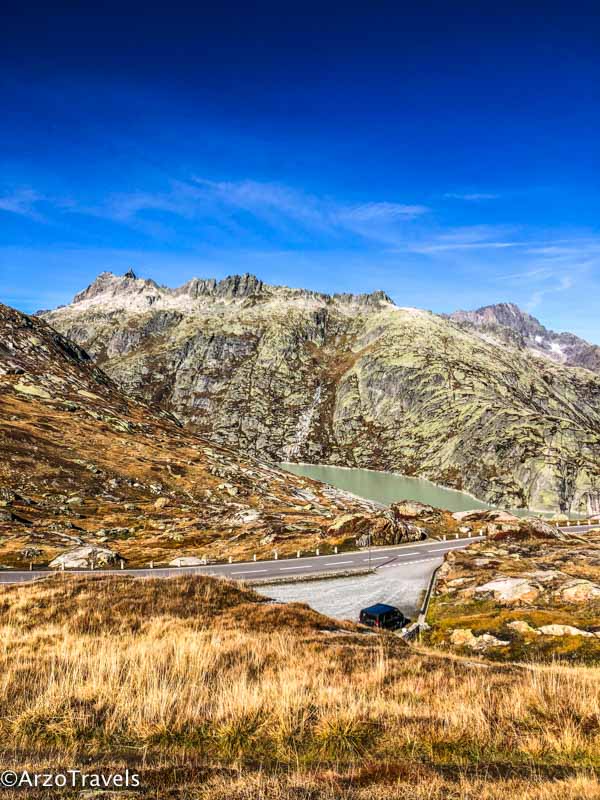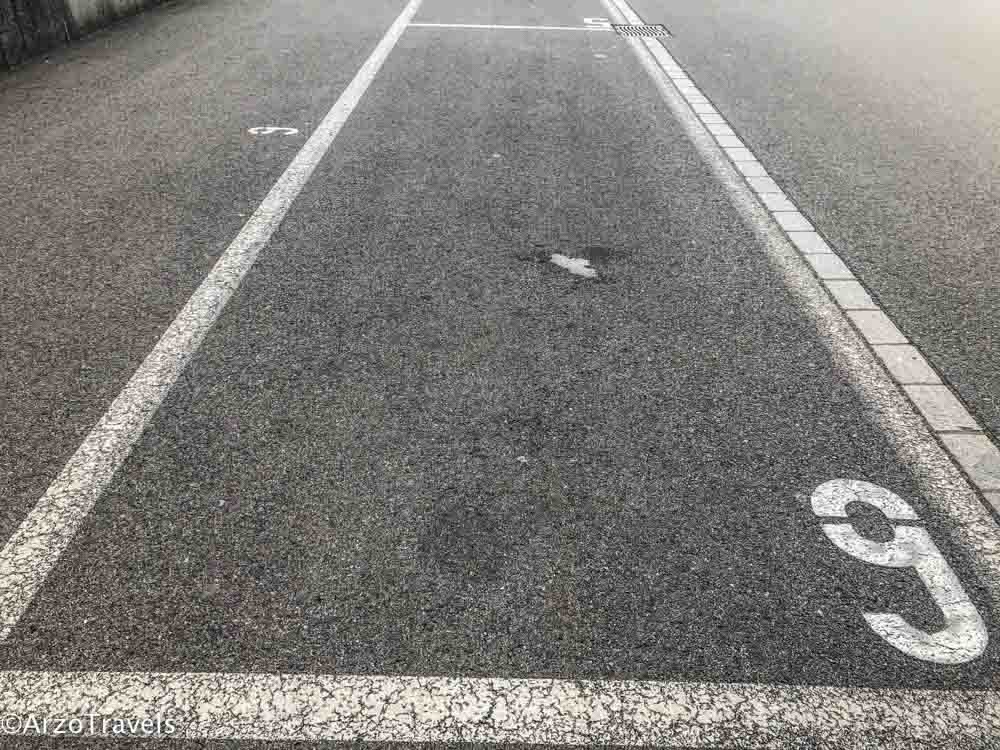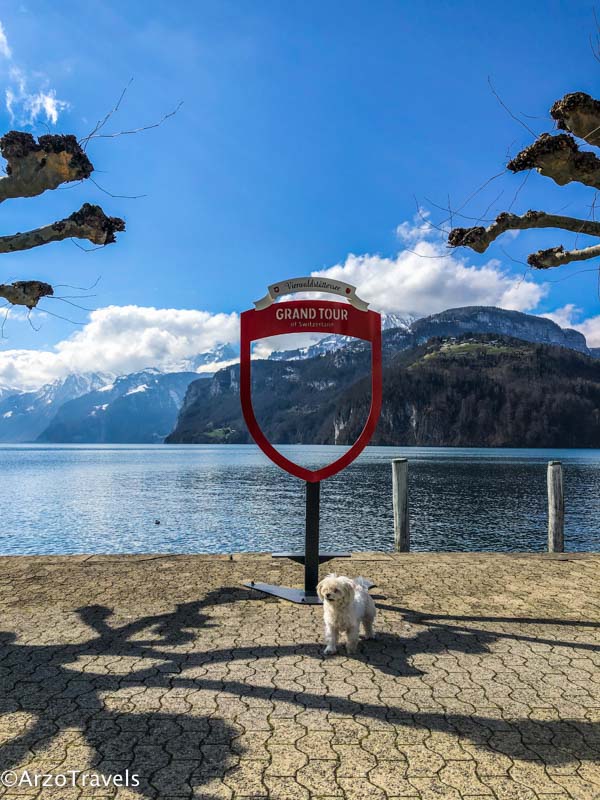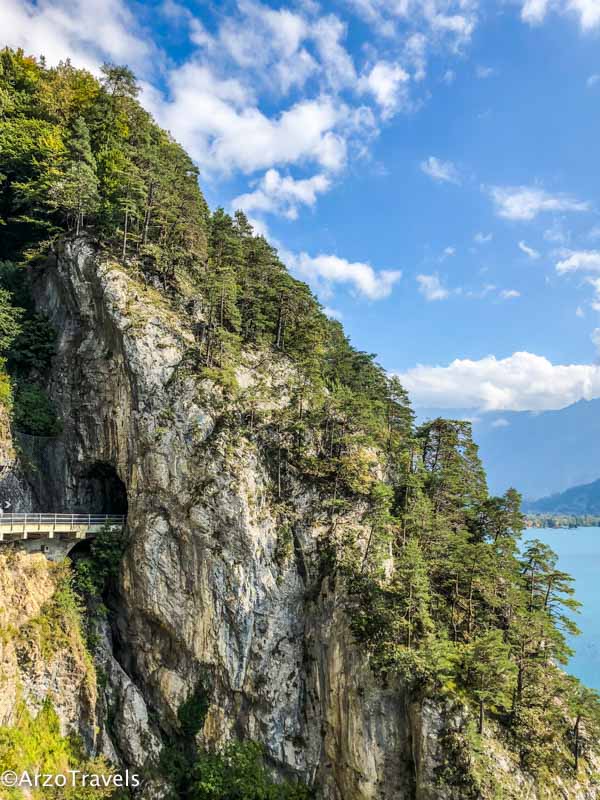DRIVING TIPS FOR SWITZERLAND – WHAT YOU NEED TO KNOW
Switzerland is one of the best places for a road trip. Driving in Switzerland is exciting, with the country’s spectacular mountain roads and picturesque towns providing a unique backdrop to any journey.
I love driving through Switzerland – it is fun as the altitude changes as I crest and descend hills and mountains – so small, yet so many beautiful places. The roads and highways are incredibly safe and fantastic. As a driver, I could not ask for a better country to enjoy a scenic road trip.
There’s only one downside – as the driver, I miss a lot of the beauty because I have to focus on the road.
Seriously, if you can only road trip to one country in Europe, I suggest making it Switzerland. Even though public transportation is amazing in this country, it is worth taking a road trip and exploring lovely Switzerland by car.
READ MORE: 7-Day Itinerary for Switzerland
However, of course, this is not all I have to say about driving in Switzerland. It also can be a challenge due to its challenging terrain, so it’s important to know the rules of the road and take extra precautions when driving on Swiss roads. Here are some tips to help you enjoy a safe and stress-free driving experience in Switzerland.
REQUIREMENTS FOR DRIVING IN SWITZERLAND
There are some requirements you need to be aware of.
❗ You must be at least 18 years old to drive in Switzerland.
❗ Your driver’s license must be in either English, German, Italian, or French. Otherwise, it will need to be transferred (International Driving Licence).
❗ If you stay for less than 12 months, you can use your own foreign driver’s license. After that, you must renew your license in Switzerland.
❗ Your license needs to be with you at all times.
❗ If you drive your own car, it needs to have insurance. Rental cars, of course, must also be insured.
SWITZERLAND – RULES FOR DRIVING
❗ The speed limits are 120 kph for motorways/freeways is 120 kph, and highways are 100 kph.
❗In the cities, the speed limit is 50 kph; in residential areas, the maximum speed is 30 kph, and in rural areas, it is 80 kph.
❗ Some signs advise when to adjust your speed, and make sure that you heed them as there are speed cameras everywhere and the tickets are expensive.
❗ You will be driving on the right side of the street in Switzerland.
❗ Always yield right of way to public transportation and emergency vehicles.
❗ Be aware of pedestrians and cyclists, as they have the right of way and sometimes step out into traffic unexpectedly. And sometimes even cows or sheep.
❗ Tip: If two vehicles meet on a narrow road going in opposite directions, the ascending vehicle has the right way.
❗Children younger than 18 months should be in a child safety seat.
❗ Everyone else needs to use a seat belt.
❗ You are required to drive with your lights on, even in the daytime.
❗ You must not use your mobile when driving. This includes when you are waiting on a red traffic light. Violations can result in hefty fines.
❗ Don’t drink and drive. In Switzerland, the maximum blood alcohol content while driving is 0.05%, which is lower than in many other European countries. If you are caught driving under the influence, you will be fined, and your license will be revoked.
RENTING A CAR IN SWITZERLAND
Renting a car in Switzerland is quite easy. However, make sure to rent a car that is fully covered. Everything in Switzerland is expensive – if you are responsible for damage to your rental car, it could be expensive. To avoid any negative surprises, I suggest paying a little more for the full insurance.
I always road trip Switzerland in my own car/van and cannot talk about first-hand experiences when renting a car, but I have used this rental company to find and book my rental car in Albania and can wholeheartedly recommend it.
TOLLS IN SWITZERLAND
In Switzerland, you will need a toll sticker for the motorways. Though the most scenic roads in Switzerland are actually off the motorways, you usually end up driving on them at some point. I suggest getting a sticker, especially if you road
The vignette/toll sticker is about 40 Swiss Francs (around $ 44/40 Euro) and lasts from 1st December to the 31st. January the following year (so, it is actually good for 14 months).
Where to buy a toll sticker in Switzerland? You can buy an annual toll sticker for your car at gas stations, post offices, or at the border. I have always been able to pay by credit card, but you can also pay cash. These days, you can also buy a Swiss toll sticker online.
If you rent a car, it will most likely already have a sticker.
WHAT IS A MOTORWAY/HIGHWAY IN SWITZERLAND?
Swiss road signs indicate the motorways – green signs show it is a motorway/highway. In this case, you need to have a vignette/toll ticket for the Swiss motorways.
Blue signs indicate toll-free roads.
GAS / PETROL STATIONS AND PRICES IN SWITZERLAND
What about gas stations in Switzerland? There are plenty of gas stations everywhere. Okay, not necessarily on the mountain peaks, but petrol stations are in cities as well as in rural areas.
Gas stations are all self-service. Most gas stations have staff, but whether there is staff or none, you pump your own gas.
When there is a cashier, you pay at the cashier (cash or card, ask about credit card acceptance beforehand) after you have filled your own gas/diesel.
Sometimes there is no staff and you have to pay at the machine – pay the amount you want and then you can refill. Those gas stations tend to be minimally cheaper.
Oh, petrol in Switzerland is quite expensive, and prices vary greatly. The rates are some of the highest in Europe, though.
1 liter of petrol is about 1,80 CHF and Diesel is more expensive than petrol here and costs around 2 CHF for one liter.
PARKING IN SWITZERLAND
Parking in Switzerland can be a little tricky. Always look for signs to tell you if you can or cannot park in a certain area, but as a rule of thumb, follow these color codes.
MAIN TIP: You should get a parking disc as you may need it. You can get parking discs at police stations, banks, or tourist offices.
ℹ️ YELLOW LINES: These are private or reserved for companies and may only be used by them or their clients and guests. So, do not park on the yellow lines unless you have permission.
ℹ️ WHITE LINES: These are chargeable and often numbered. There are parking meters sometimes, so check the number on the white line where you parked and input it into the meter to pay for the spot.
ℹ️ BLUE LINES: These areas mean that parking from Monday until Saturday from 8 am until 6 pm is free of charge for an hour with the blue parking disc (including the EU parking disc). On Sundays and public holidays, parking is free for the day.
❗Parking on main roads outside of towns is prohibited.
DRIVING IN THE SWISS MOUNTAINS / SWISS ALPS
Switzerland is known for its mountains and mountain passes, so you will come across many of them while road tripping here.
Driving in the mountains is not always easy, especially not in the Italian-speaking part of Ticino. The people there drive faster, and the streets are narrower. Just remember that you need to drive on the right side of the road and yield right of way to all public transportation and emergency vehicles. And sometimes you have to stop and enjoy drastic skies like this one…
TIP: Don’t underestimate the distance from one place to another. It can take much longer to get to places on the narrow mountain roads than you would expect. Plan in enough time for travel.
EXTRA TIP: Some mountain passes are closed in the winter because of snow, including my favorite – Susten Pass, which is only open from June to October.
Most mountain passes are attractions in themselves. You will find lakes, rivers & streams, hiking trails, restaurants, and more along many mountain roads. So, it is fun but can be tedious, too.
20 DRIVING TIPS FOR THE SWISS MOUNTAINS
- Familiarize yourself with the terrain of the area in which you will be driving so that you are aware of any tight turns or steep inclines (a GPS helps).
- Check local traffic regulations before setting off so that you don’t inadvertently break any laws.
- Always check local weather forecasts, as mountain weather can change quickly, and be prepared for inclement conditions.
- Be alert and cautious when driving on mountain roads because of their narrow width and sharp curves.
- If you drive a manual, use low gears when driving up steep inclines. This will help to increase your control over the car and reduce brake wear.
- Be sure to keep a safe distance between you and other vehicles, as it can be difficult to pass on mountain roads.
- Don’t forget to enjoy the view and take breaks when necessary, as driving in the mountains can be physically and mentally taxing.
- It is important to carry a basic emergency kit with you in case of breakdowns or other unexpected events.
- Make sure that your tires are properly inflated and have sufficient tread before heading out on the road.
- Slow down when approaching any bridges, as they can be slippery when wet. Also, some (especially in rural areas) can be narrow and only fit one car, so watch out for oncoming traffic.
- Drive with extra caution when it is foggy or raining, as visibility can be severely reduced in these conditions.
- Always use your headlights, even during the day, so that you are visible to other traffic on the road.
- If you feel tired while driving, it is best to pull over and rest in a safe spot.
- Avoid sudden steering or braking, as this can cause your vehicle to skid on wet roads.
- Be aware of any wildlife that may be present in the area and take extra caution when driving near them.
- Be aware of cyclists, hikers, and other pedestrians on the road when driving in mountainous areas, as they can be difficult to see.
- If your vehicle starts to slide downhill, do not press heavily on the brakes; instead, gently engage them until you regain control.
- Drive with caution on icy roads, as these can be especially hazardous in winter. Snow chains might be the way to go in the winter months – especially if you drive in the mountains.
- A GPS is a must when driving in Switzerland. However, you cannot always rely on it – I remember times when Google Maps told me to make a sharp turn, which would have resulted in falling off the cliffs. So, though important, do use your common sense.
- Have a plan for where you will go should an emergency arise while driving in the mountains. Know your options in case of an accident or breakdown, and also know emergency numbers.
DRIVING THROUGH TUNNELS AND OVERLOOKS IN SWITZERLAND
Are there many tunnels in Switzerland? Yes, many. Many. Many. Apparently, there are more than 1,200 tunnels in this tiny country. Though this is not surprising given how mountainous and yet accessible Switzerland is.
There are a lot of tunnels in Switzerland as well. Long, short, narrow, wide – all kinds of tunnels. Some are boring, and some are stunning (like in this picture).
The Gotthard Base Tunnel is the longest at 16.9 km (10.5 miles) and is worth a visit. You’ll also come to a lot of scenic overlooks, so you can stop and enjoy the scenery (perfect when you’re the driver).
DRIVING IN SWITZERLAND WINTER
Driving in Switzerland in summer is amazing, and it is easy most of the time. However, keep in mind that snow is widespread, and driving might become a bit more challenging.
I have never driven myself in the winter but have experienced closed mountain passes in October – many mountain passes are closed in the winter. Actually, they are even closed in the fall and some until June. So, consider this when planning your trip (as it will take even more time to drive in the winter).
HERE ARE MORE TIPS FOR VISITING SWITZERLAND IN THE WINTER
FINAL THOUGHTS ON HOW TO DRIVE IN SWITZERLAND
I hope these tips on driving in Switzerland will make your trip – and especially driving in Switzerland – easier and more enjoyable. Once you know how to travel by car in Switzerland, you can focus on the lovely scenery, charming towns and cities, and breathtaking lakes and mountains that the country is known for.
And as someone who regularly drives in other countries, I can only say: Switzerland is a good an amazing place for road-tripping, and the overall street and road conditions make it a pleasure to drive.
Just make sure not to drive too fast to avoid having the speed cams take a souvenir picture of you, and follow the other rules and regulations.
Check out my Switzerland road trip post to find out about the best stops.
CUSTOMIZED ITINERARY PLANNING
If you need more help and are looking for customized itinerary planning, please check the services I offer:
Get your customized itinerary for Switzerland here
➡️ Here are more travel tips you should read before planning your trip to Switzerland.
➡️ Check out the best places to visit in Switzerland in 10 days.
➡️ Find the best landmarks in Switzerland
➡️ Driving along Lake Thun. Here is more about the best time to visit Switzerland
